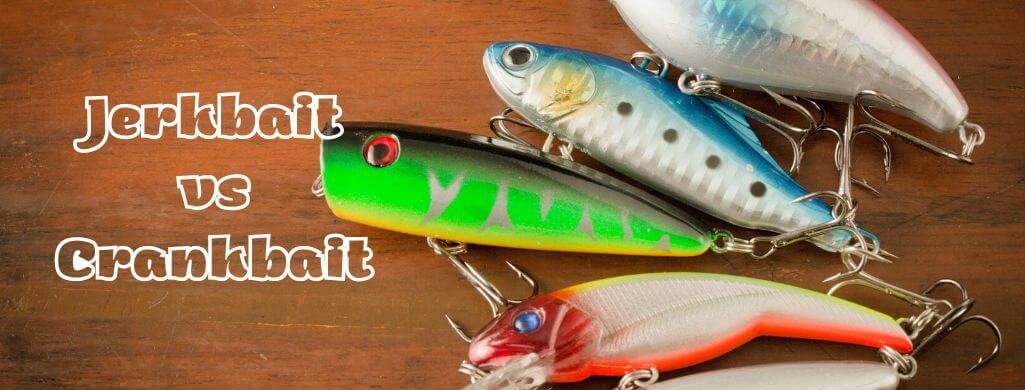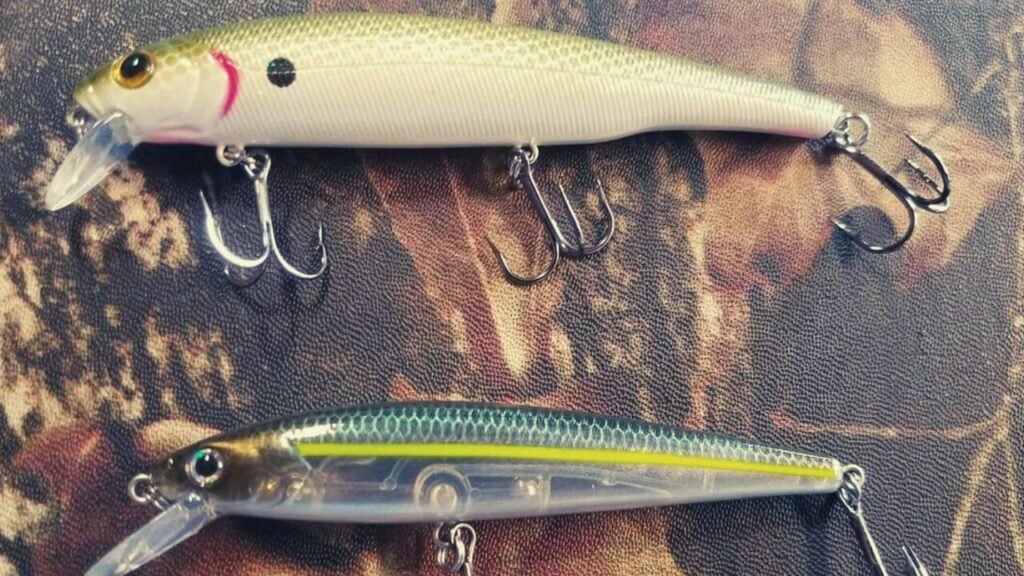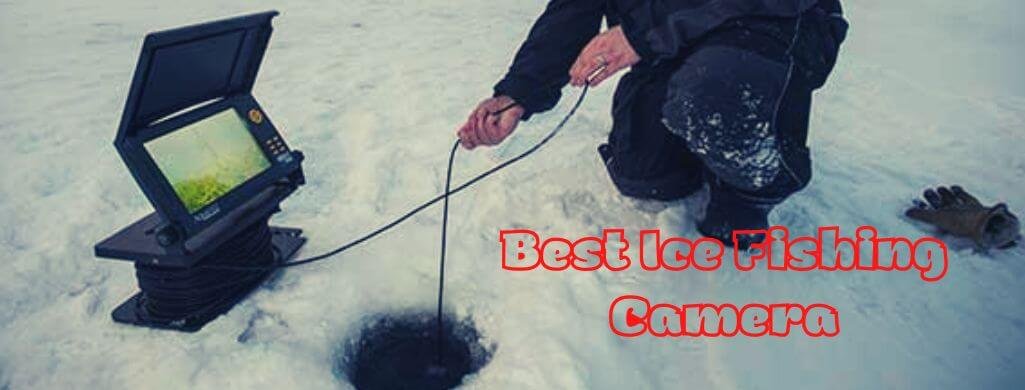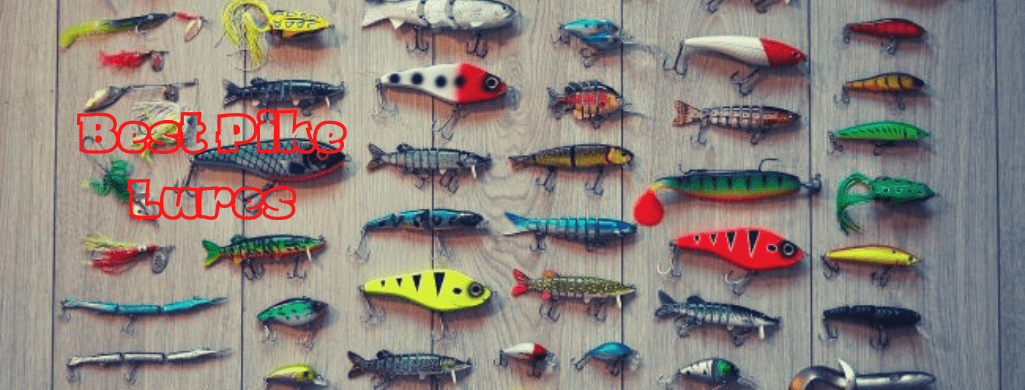
When it comes to fishing lures, there are two main types: jerk baits and crankbaits. So, which one is better? And what’s the difference?
In this article, we’ll take a closer look at jerkbait vs crankbait. Plus, we’ll discuss when and how to use each type of lure for the best results.
By the end of this article, you’ll be able to decide for yourself which type of lure is better for catching bass! Let’s get started!
Table of Contents
What is the Difference Between a Jerkbait and Crankbait?
The first thing to know is that jerk baits and crankbaits are two different types of lures. Jerk baits are designed to be fished slowly, while crankbaits are meant to be fished quickly.
Jerk baits get their name from the way they’re fished. To use a jerk bait, you simply cast it out and then jerk the rod tip to make the lure swim erratically. This action is meant to mimic a wounded or struggling fish, which will trigger a predatory response from the bass.
Crankbaits, on the other hand, get their name from the way they’re retrieved. To use a crankbait, you simply cast it out and then reel it in at a steady pace. This action creates a swimming motion that bass are attracted to.
So, which is better? Jerkbait vs crankbait? The answer is that it depends on the situation.
If you’re fishing in cold water or around heavy cover, then a jerk bait is probably your best bet. But if you’re fishing in open water or around structures, then a crankbait is probably your best bet.
So, it’s important to experiment with both types of lures to see what works best in your particular situation.
What is a Jerkbait?
Jerkbait lures are one of the most popular types of fishing lures for bass fishing. Jerkbaits are designed to mimic the action of a fleeing baitfish, and they are often used to catch fish in open water or near cover.

Jerkbait lures are typically made from plastic or wood, and they are fitted with a set of treble hooks. Jerkbait lures are typically used to target bass, trout, and walleye.
Jerkbaits come in a variety of shapes and sizes, colors, and styles, and they can be fished using a variety of techniques. When used properly, Jerkbait lures can be extremely effective at catching fish.
Some anglers prefer to fish jerkbaits slowly, while others use a more aggressive approach. Jerkbait lures can be effective in a wide range of situations, and they are a great choice for anglers who want to catch fish on the surface.
When fishing with a Jerkbait lure, the angler imparts a jerking motion to the lure, which causes it to swim erratically through the water. This action is meant to trigger a predatory instinct in fish, causing them to strike at the lure.
How to Fish a Jerkbait
Fishing with a jerkbait is relatively simple, but there are a few things you should keep in mind. First, jerkbaits are designed to be fished slowly, so it’s important to use a slow and steady retrieve.
Second, jerkbaits are often used around cover, so be sure to use a leader that won’t get tangled.
And finally, be sure to set the hook hard when you feel a strike, as jerkbaits are often times fished near heavy cover.
When fishing with a jerkbait, it’s important to use a slow and steady retrieve. This will help the lure swim erratically through the water, which is what attracts fish.
Jerkbaits are often used around cover, so be sure to use a leader that won’t get tangled. And finally, be sure to set the hook hard when you feel a strike, as jerkbaits are often times fished near heavy cover.
Types of Jerkbaits
There are many different types of jerkbaits on the market, and they come in a variety of shapes, sizes, colors, and styles.
Suspending Jerkbaits:
Suspending jerkbaits are designed to suspend in the water column, making them more difficult for fish to steal.
There are a variety of different types of suspending jerkbaits on the market, so you’re sure to find one that suits your fishing needs. And because they’re less likely to be stolen, you’ll have more success reeling in the big one.
So next time you’re feeling frustrated on the water, remember: suspending jerkbaits are the way to go.
Floating Jerkbaits:
Floating jerkbaits are one of the most versatile and effective lures for freshwater fishing. Unlike other lures that rely on a steady retrieve, floating jerkbaits can be fished using a variety of techniques to trigger strikes from a wide range of fish species.
One of the most common ways to fish a floating jerkbait is with a twitch-and-pause retrieve. This involves briefly reeling the lure, then stopping to allow it to float back to the surface before repeating the process.
The jerking motion creates a lifelike swimming action that is often irresistible to fish, while the pause gives them a chance to fully commit to the strike.
Another popular way to fish floating jerkbaits is to simply let them drift with the current. This can be especially effective when fish are holding near cover or structure.
Sinking Jerkbaits:
Sinking jerkbaits are designed to mimic the movement of baitfish, making them irresistible to predators. There are three main types of sinking jerkbaits: fast-sinking, slow-sinking, and suspend.
Fast-sinking jerkbaits sink quickly and are ideal for fishing in deep water. Slow-sinking jerkbaits sink more slowly, which makes them better for shallower water. Suspend jerkbaits hover in the water, making them perfect for fishing around vegetation or other structures.
What Is a Crankbait?
A crankbait is a type of fishing lure that is designed to mimic the action of a swimming baitfish. Crankbaits are very popular with bass anglers, as they are incredibly effective at catching fish.

Crankbaits come in a wide range of shapes, sizes, colors, and styles, each of which is designed to appeal to a different type of fish.
Crankbaits are typically fished with spinning rods and reels, and they are cast out into the water and retrieved by reeling in the line.
Crankbaits can be fished at a variety of depths, and they are often used to target fish that are suspended in the water column. Crankbait fishing is a popular technique among anglers, and it can be an effective way to catch fish.
Crankbaits are relatively easy to use, and they can be very effective when fish are feeding on baitfish. Whether you’re a beginner or a seasoned angler, crankbaits are worth adding to your tackle box.
How to Fish a Crankbait
Crankbaits are most commonly fished with a spinning rod and reel, but they can also be fished with a baitcasting rod and reel.
When fishing with a crankbait, it’s important to use the proper technique. The key to success with crankbaits is to keep them in the strike zone for as long as possible.
The best way to do this is to use a steady retrieve, reeling the crankbait in at a consistent speed. It’s also important to avoid using too much line, as this can cause the crankbait to dive too deeply and miss the strike zone altogether.
Crankbaits are a great way to catch fish, and they can be used in a variety of situations. If you’re looking for an effective way to target fish, crankbaits are worth considering.
Types of Crankbaits
There are three main types of crankbaits: lipless, Squarebill, and deep-diving.
Lipless Crankbaits:
Lipless crankbaits are the most popular type of crankbait, as they are incredibly versatile and effective. Lipless crankbaits come in a wide range of sizes and colors, and they can be fished at a variety of depths.
Lipless crankbaits are one of the most versatile and effective fishing lures out there. They can be used in a variety of situations and scenarios, making them a must-have for any fisherman’s tackle box. Lipless crankbaits are typically easy to use, and they can be very effective in catching fish. But what exactly are they, and how do you use them?
Lipless crankbaits are simply lures that don’t have lips. They get their name from the fact that they have a lipless body design, which means that they don’t have the traditional lip that most other fishing lures have.
Lipless crankbaits typically have a hard body made of plastic or metal, and they usually have a round or cylindrical shape.
Lipless crankbaits usually have two treble hooks attached to the back of the lure, and they often have a rattle inside the body of the lure, which helps to attract fish.
Lipless crankbaits can be fished in a variety of ways, but they’re typically fished with a quick, jerking motion. This motion causes the lure to wobble and vibrate, which is often very effective in attracting fish.
Lipless crankbaits are often used to target bass, but they can also be used to target other freshwater fish like trout, walleye, and pike. Lipless crankbaits are available in a variety of sizes, colors, and styles, so it’s important to choose the right one for the situation you’re fishing in.
Squarebill Crankbaits:
Squarebill crankbaits are a type of fishing lure that gets its name from its square shape. Unlike other types of crankbaits, squarebill crankbaits are designed to dive down deep into the water, making them ideal for catching fish that are hiding in deep pools or under rocks.
Squarebill crankbaits come in a variety of sizes and colors, so you can choose the one that best suits your needs. And because they’re so easy to use, squarebill crankbaits are a great choice for both beginner and experienced anglers alike.
Squarebill crankbaits are particularly effective in shallow water, where they can be used to target fish that are hiding in cover.
The Squarebill’s unique design allows it to deflect off of obstructions, making it ideal for fishing in heavily vegetated areas.
Additionally, Squarebill crankbaits come in a variety of colors and sizes, making them suitable for use in many different fishing conditions. Whether you’re an experienced angler or just getting started, Squarebill crankbaits are an essential tool for your tackle box.
Deep Diving Crankbaits:
Deep Diving Crankbaits are an excellent choice for anglers who want to target fish in deeper water.
These lures sink quickly and dive deep, making them ideal for fishing in lakes, reservoirs, or rivers with deep channels.
Deep Diving Crankbaits are equipped with heavy-duty treble hooks that can handle the biggest fish, and they are available in a variety of colors and patterns that are sure to attract attention.
Whether you’re trolling for trout or casting for bass, Deep Diving Crankbaits are an effective way to reach fish that other lures can’t.
Deep diving crankbaits typically have an oblong or tear-shaped body, and they are equipped with one or more sets of treble hooks.
The wings on the body of the lure create a flashing effect that is irresistible to many species of fish, and the hooks make it easy for anglers to set the hook and land their catch.
Deep diving crankbaits come in a wide variety of colors and styles, so anglers can choose the perfect lure for their fishing conditions. Whether you are fishing for bass, walleye, or another type of fish, deep diving crankbaits are an essential part of any tackle box.
When To Fish A Jerkbait vs Crankbait
Jerkbaits are most effective in the spring and fall when fish are actively feeding.
Crankbaits can be used year-round, but they are particularly effective in the spring and summer months.
When choosing between a jerkbait and a crankbait, it’s important to consider the type of fish you’re targeting and the time of year.
If you’re fishing for bass, jerkbaits are generally more effective in the spring when bass are spawning, and crankbaits are more effective in the summer when bass are feeding on baitfish.
Similarly, if you’re fishing for trout, jerkbaits are more effective in the spring when trout are spawning, and crankbaits are more effective in the summer when trout are feeding on baitfish.
Match The Hatch
This means choosing a lure that closely resembles the type of baitfish that the fish you’re targeting are feeding on.
If you’re fishing for bass and you know they are feeding on shad, choose a jerkbait or crankbait that closely resembles a shad.
Many jerkbaits and crankbaits are designed to closely match the colors and patterns of common baitfish, making it easy for anglers to “match the hatch.”
When fishing for trout, it’s often effective to use a lure that imitates a small minnow.
Check Your Local Forage
Before you head out on your next fishing trip, take a look at the local forage to see what baitfish are most common in the area.
This will help you choose the right jerkbait or crankbait to “match the hatch” and increase your chances of success.
Water Clarity
Water clarity is another important factor to consider when choosing between a jerkbait and a crankbait.
Jerkbaits are designed to be fished slowly, so they are most effective in clear water where fish can see the lure.
Crankbaits, on the other hand, can be fished quickly, so they are effective in both clear and murky water.
Water Depth
Jerkbaits are typically designed to fish in shallow water, while crankbaits can be used in both shallow and deep water.
When fishing with a jerkbait, it’s important to keep the lure close to the surface so that the fish can see it.
Crankbaits can be fished at a variety of depths, so they are a versatile option for anglers.
Conclusion
Jerkbait vs crankbait is a difficult question to answer. They both have their pros and cons and it really depends on the situation you’re fishing in.
If you’re fishing for bass, I would recommend using a jerkbait. But if you’re fishing in open water or trying to cover a lot of ground, a crankbait is the way to go.
Do you have a preference between jerkbait and crankbait? Let me know in the comments below!




